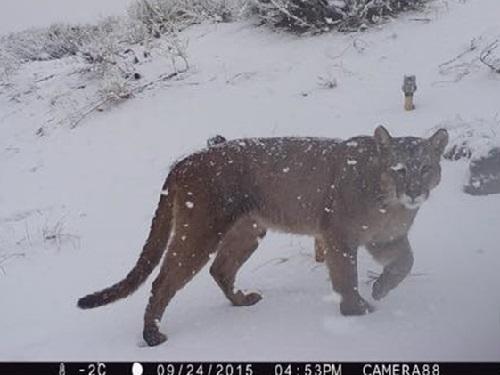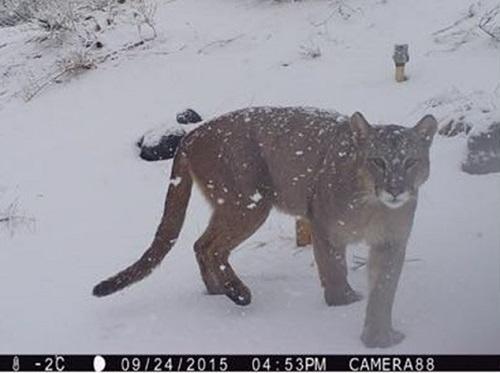Maria Laura Gelin
The aim of my project is to estimate density of pumas in areas across the migratory range of guanacos in La Payunia reserve, Argentina and assess how density changes with the guanaco migration; analyze if the puma diet changes, particularly if they are consuming more livestock or alternative prey when guanacos migrate. Finally, estimate density of the three native small cats with photographs from the same camera trapping conducted for pumas.

Predators are threatened worldwide because they require large amounts of habitat and conflict with humans. At the same time, these species play key roles in maintaining dynamics of ecosystems, including ecological services critical to humans. Understanding dynamics of predators and their prey is fundamental for conservation in protected areas because changes in predator and prey abundance can have complex, cascading effects throughout the ecosystem. Top predators also generate significant conflict for protected area management because predators often prey on livestock owned by people in or near protected areas. As a result, predators are killed by local people.

This project aims to investigate the response of pumas (Puma concolor) to the longest known terrestrial migration of wildlife in South America -- migration of guanacos (Lama guanicoe) a wild relative of the lama, in La Payunia Reserve of northern Patagonia, Argentina. In this system, guanacos are migratory and are the preferred prey for pumas. When guanacos migrate pumas may be more vulnerable to humans because they prey on domestic livestock or increase activity outside reserves. Using camera traps, I will estimate the density of pumas in winter and summer ranges of guanacos in La Payunia Reserve, and changes in this density with guanaco migration. At the same time, these cameras will allow me to obtain data on density of smaller cats (e.g Pampas cat (Leopardus colocolo), Geoffroyi’s cat (Leopardus geoffroyi) and potentially the endangered Andean cat (Leopardus jacobita) which are poorly known and, in the case of Andean cat, highly endangered. In addition, I will analyze puma scats to assess changes in consumption of native prey and livestock with guanaco migration.